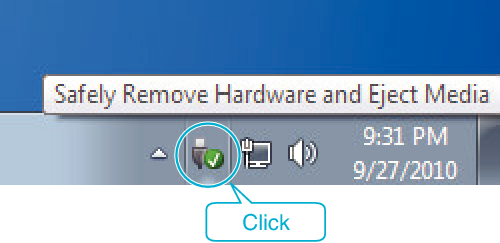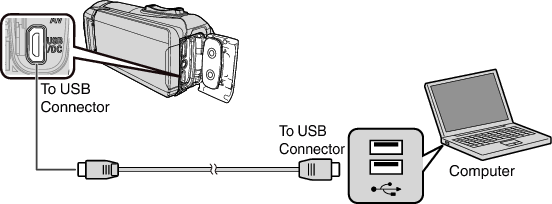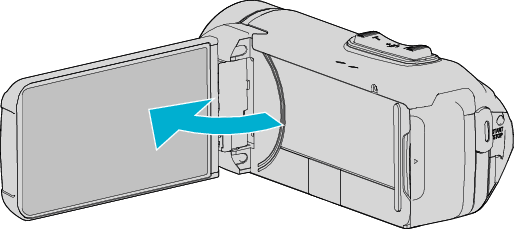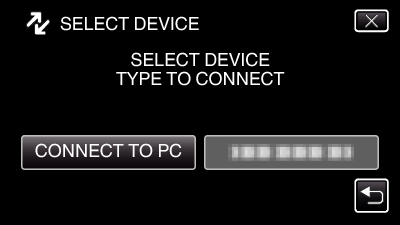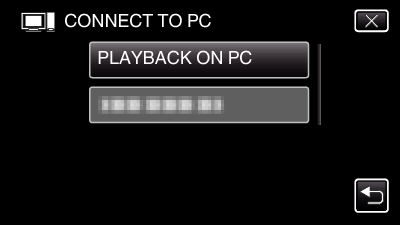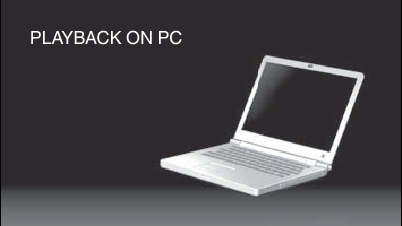Backing Up Files Without Using Provided Software
Copy the files to a computer using the following method.
This operation cannot be completed if the remaining battery power is not enough. Charge the battery fully first.
Connect to your PC using the provided USB cable.
Before connecting the cable, close the LCD monitor to turn off this unit.
Open the LCD monitor.
This unit turns on and the “SELECT DEVICE” menu appears.
Tap “PLAYBACK ON PC”.
Disconnect the USB cable to return to the recording or playback screen.
Close the Everio MediaBrowser 4 program, if it starts.
The following screen is displayed after the camera operation is completed.
Operations are to be performed on the computer after the screen switches.
(Windows 10)
Click “This PC” in “Windows System”, then click the “JVCCAM_MEM” or “JVCCAM_SD” icon of “This PC”.
(Windows 8)
Right-click “Computer” in the “Windows System Tool” menu to select the checkbox, and then click the “JVCCAM_MEM” or “JVCCAM_SD” icon.
(Windows 7)
Select “Computer” from the “Start” menu, then click on the “JVCCAM_MEM” or “JVCCAM_SD” icon.
Open the folder with the desired files.
Copy the files to any folder in the computer (desktop, etc).
When the camera and PC are connected by an USB cable, recorded media are read-only.
To edit/view the files, use a software that supports AVCHD (video)/JPEG (still image) files.
The above operations on computer may vary with the system used.
Disconnecting this Unit from Computer
Click “Safely Remove Hardware and Eject Media”.
Click all “JVCCAM~”.
Disconnect the USB cable and close the LCD monitor.

